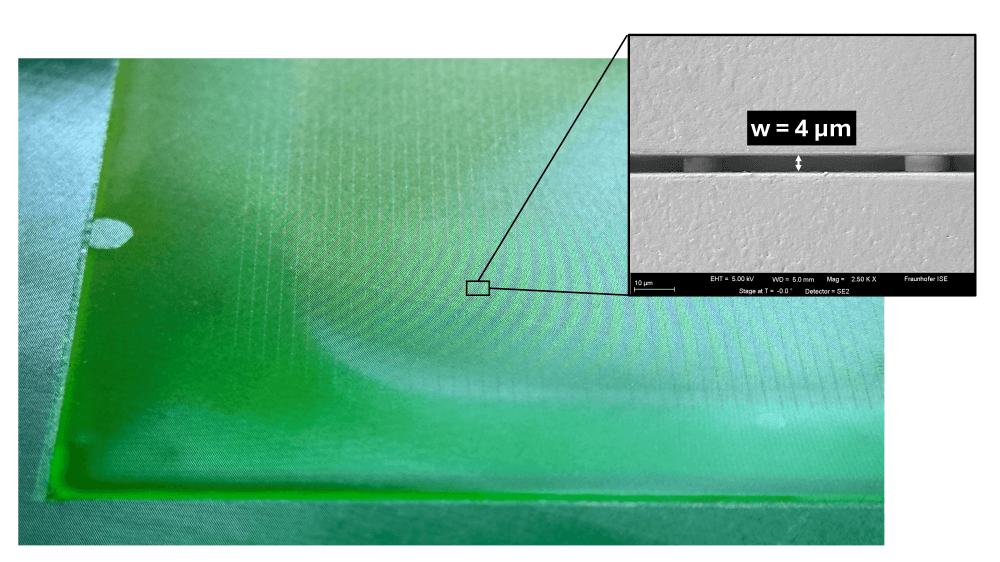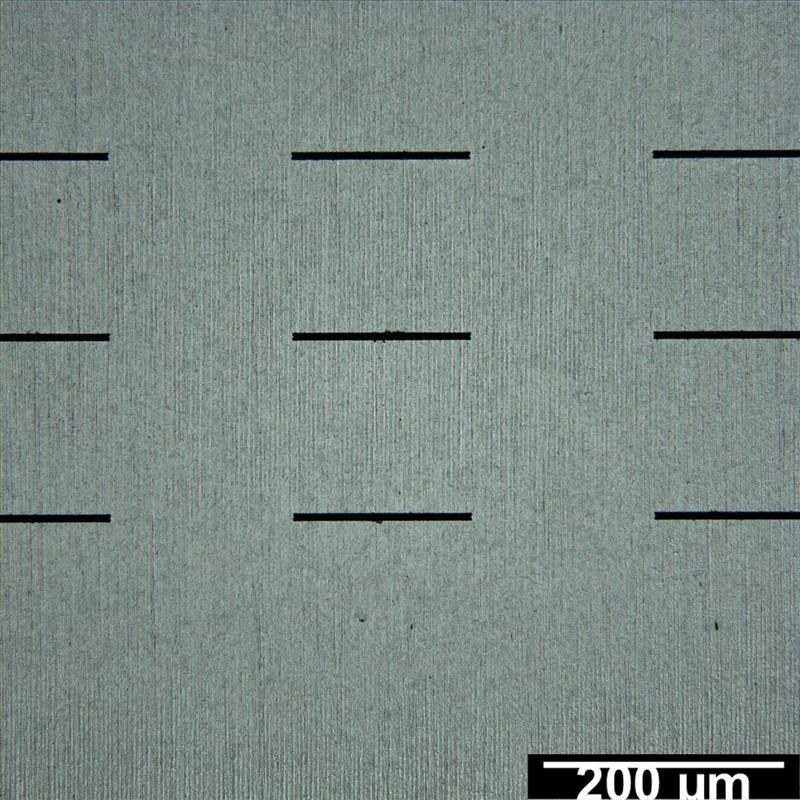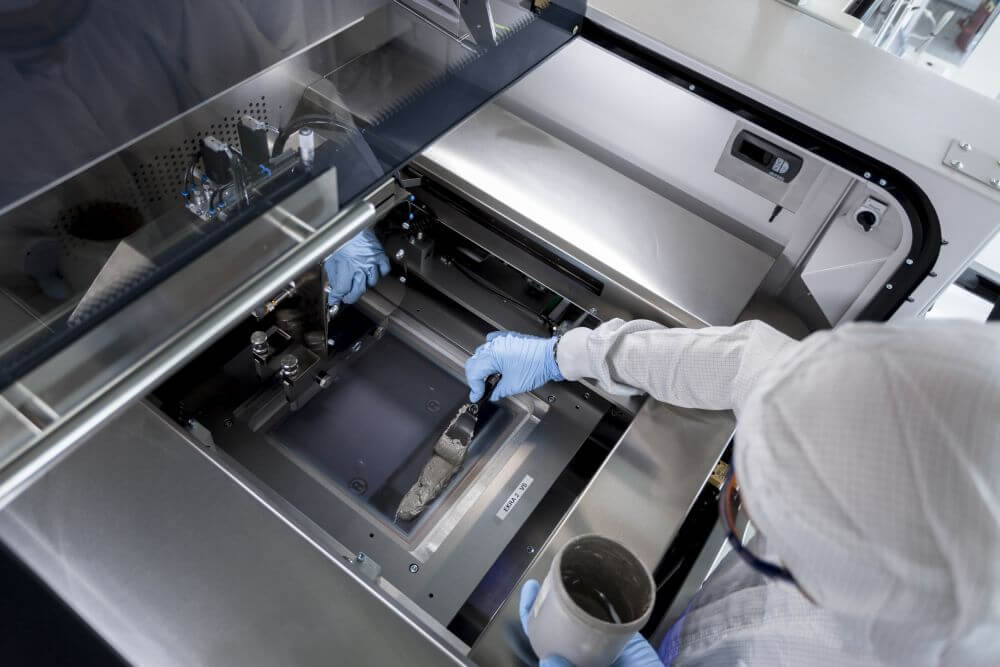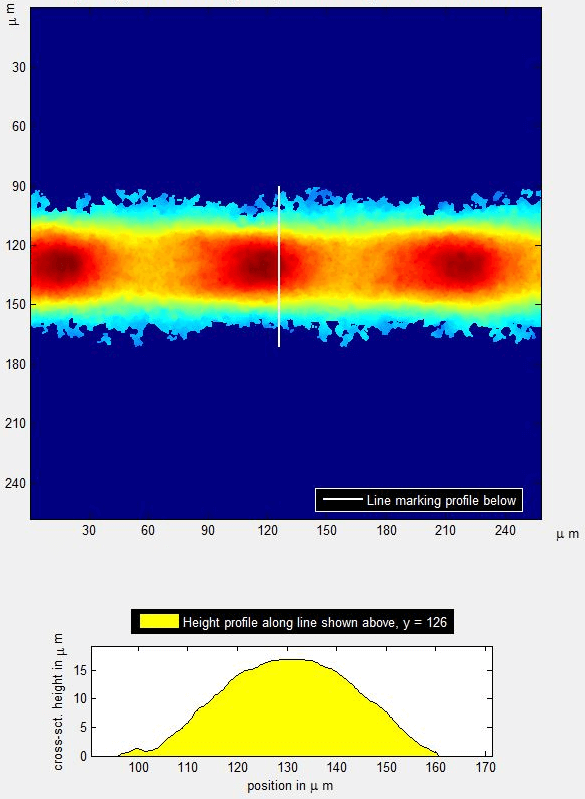The metallization of silicon solar cells with ultra-fine contacts is one of the most demanding disciplines of functional screen printing . Decades of development of high-precision fine-mesh screens and rheologically specialized metal particle pastes now enable the printing of high-quality conductive contacts with a width of <10 µm. An essential factor for the process are the high-precision structured fine-mesh screens based on a stainless steel mesh. This mesh consists of up to 200 wires per centimeter or 520 wires per inch with wire thicknesses that are five to ten times thinner than a human hair. To create a functional printing screen, the mesh is coated with a flexible top layer that is selectively opened in the printing sections using UV exposure or laser ablation.
Together with project partners, Fraunhofer ISE has developed a new platform based on ultrashort pulse laser technology and high-precision 3D scanning technology in the “Laser2Screen” project. This innovative laser solution enables the structuring of fine-mesh screens and metal foil stencils with previously unattainable precision of up to <2 µm. What is particularly revolutionary is that the fully digital laser process replaces conventional photolithography methods and offers flexible adaptation to workpiece variations as well as integrated optical measurement of the generated structures – all in a single device.
This sustainable laser technology, which does not require chemical etchants or photoresists, not only enables new possibilities for solar cell metallization, but also screen and stencil structuring for demanding applications in opto-electronics, semiconductor manufacturing, and packaging technology.




